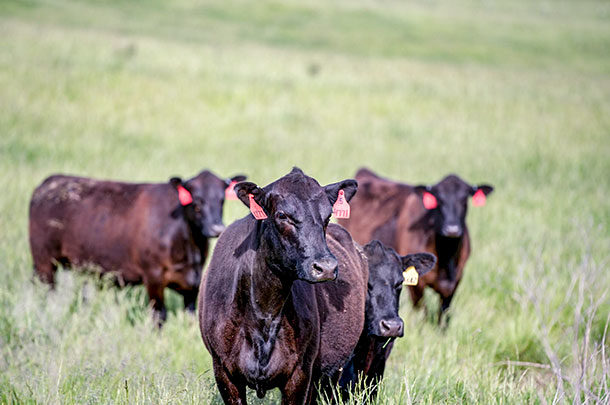Crossbreeding has proved time and time again to be the solution many producers are looking for. I'm sure the first producer to ever cross genetics thought, “You mean I can take the mother abilities of an Angus cow and breed her to a Brahman bull to ensure heat tolerance? What's the catch?” Although crossbreeding may be frowned upon in some circumstances, it can be beneficial when executed correctly – something Circle A has mastered with its Wagyu-Angus cross, or “Wangus.”
“Our original intent was to just increase the percent of USDA Prime, but the Wagyu influence has offered so much more,” says Nick Hammett, marketing manager for Circle A. “The quarter-blood Wagyu cattle consistently grade 70 to 85 percent USDA Prime.”
Between the Certified Angus Beef program and high-quality carcass values, it's no secret: The Angus breed has its fair share of superior genetics. Pair Angus genetics with Wagyu's incredibly flavorful, healthy beef and you've created a mouthwatering steak.
Aside from a juicy slab of meat, Circle A observes various benefits of Wangus cattle.
“On the feeding side, one of the greatest benefits has been the ability of the Wangus cattle to go to a heavier finish weight while avoiding the excessive yield grades of straight Angus cattle,” Hammett says. “We consistently take the Wangus steers to 1,600 pounds and get fewer yield grade 4 and 5’s than we would with Angus cattle at 1,450 pounds; that means less discounts while achieving greater quality grade premiums and more gross pounds. There is also a noticeable advantage in feedlot health that we attribute to the heterosis obtained from crossbreeding.”
Another positive, which Hammett says was a pleasant surprise, is the performance of a Wangus female in a commercial setting.
“We have spent decades adapting our cow herd to our environment and management style running about 500 cows per man; we really did not want to run into a higher input cow,” Hammett says. “The Wangus females have had a significantly higher conception rate than our straight Angus cows; they are slick-haired in the summer, have good mothering ability and outstanding udder quality.”
Although breeding Wangus cattle could certainly be classified as a niche market, a market sector that isn't always the easiest to maintain, it's worth it to Circle A. Hammett speaks of the advantage of breeding Wangus over purebred Angus.
“There are certainly Angus cattle that will grade a high-percent Prime, but you have to nearly single-trait select on marbling to achieve the same results we achieve with the Wangus breed. When you single-trait select, you give up selection pressure on so many other important traits,” Hammett explains. “Wangus allows us to utilize the plentiful and vast gene pool of the Angus breed for three-fourths of our genetic material and select only the very best Wagyu for the other one-fourth. We get the best of both worlds.”

Of course, as with any crossbreeding program, Circle A recognizes the negatives of its Wangus program. Hammett says one of the challenges Circle A faces is the limited gene pool and sporadic genetic analysis of the Wagyu breed.
“To make Wangus work at only one-fourth Wagyu, they have the be the right Wagyu genetics, and finding the right Wagyu genetics has proven difficult. We are accustomed to the Angus breed where it is hard to go wrong with 50, maybe even 100 top A.I. sires in any given breeding season,” Hammett says. “We quibble over very minor differences. Genetic analyses are conducted weekly, and affordable semen is readily available; the Wagyu breed is totally different.”
Another challenge, Hammett says, is the balance of supply and demand. Once packers and retailers sampled Wangus beef, it was almost as if Circle A couldn't produce its product fast enough (a “problem” every cattle producer longs for).
“Every packer and retail who has sampled the product wants as much as they can get and needs it on a consistent basis. We’re working hard at managing calving seasons and management protocols to ensure we have a monthly supply of the Wangus product as soon as possible.”
This October, Circle A will sell 30 crossbred bulls along with a few crossbred heifers.
“We’ve spent over a decade proving the concept works on our own herd, and this fall will be the first time we’ve offered the Wangus breeding stock outside of our system,” Hammett says. “Our goal is to get them in the hands of customers who will sell those calves back to our feedlot for a premium so that we can fill our supply chain with Wangus beef.” ![]()
Mayzie Purviance is a freelancer based in College Station, Texas.
PHOTO 1: Circle A Ranch keeps the management ratio at 500 cows per employee.
PHOTO 2: Circle A Ranch plans to sell 30 Wangus crossbred bulls in the fall. Photos provided by Nick Hammett.











